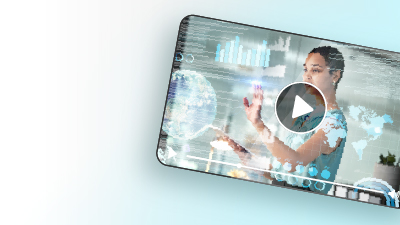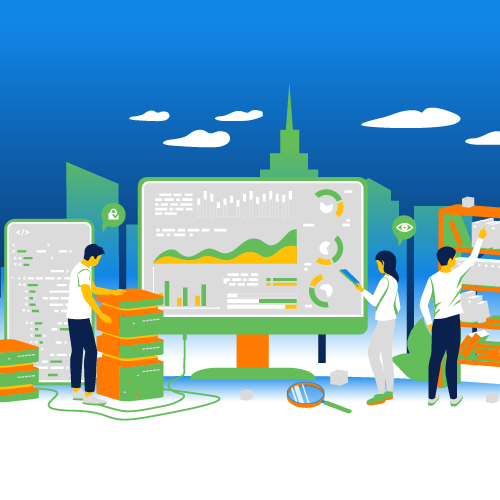Every device, service, and application in an IT estate generates a continuous stream of data that, when complete, accurate, and in proper context, can tell IT operations everything it needs to know to keep things running at peak efficiency. This is why understanding the concepts of observability and monitoring—what they are, what they mean, how they are similar, and how they are different—is important.
Observability vs. Monitoring Defined
IT infrastructure monitoring is the use of tools and processes to see and track what is happening across your organization’s IT estate in real time, to alert your team to trouble and outages, and provide a moment-to-moment view of the health of operations. Observability is defined by Gartner as “the evolution of monitoring into a process that offers insight into digital business applications, speeds innovation, and enhances customer experience.” But observability can mean different things to different organizations—and it’s constantly evolving. ScienceLogic defines observability as modern application performance monitoring (APM) and analytics.
The difference between observability and monitoring is a distinction important for IT operations; it is the difference between knowing of the presence of a device, service, or application (monitoring), and collecting enough information to know about those things (observability), and then using those insights to make informed decisions. And in ITOps, those are significant distinctions, especially when addressing the needs of today’s IT infrastructure.
The Value of Observability and Monitoring
In ITOps, it is vital to not only monitor your infrastructure, but to be able to understand why something is working—or not working—as expected. This is where the relationship between observability vs. monitoring makes a big difference in ensuring your IT estate is meeting user and customer expectations. By monitoring a server, for example, you can know whether it is operational. It’s an either-or proposition. By observing that server, you can know whether it is operating at maximum efficiency and, if not—or if it is not working at all—you have enough contextual data to know why, and what to do about it.
According to Gartner, the proliferation of technologies like cloud platforms, containers, virtual systems, IoT, and applications has “resulted in an explosive increase in telemetry and machine data that challenges [infrastructure and operations] technical professionals as they manage aggressive service-level objectives. Existing processes and tools may not be sufficient,” as they are unable to keep up with the flow of data and are unable to sufficiently analyze and use what data they have.
The level of understanding an ITOps team gains from observability vs. monitoring alone makes possible more advanced functions like autonomous operations that enable ticket enrichment, self-healing, and preventative maintenance. It can also provide the kinds of vital insights that support service innovations, a higher level of customer service, and contribute to the bottom line.
Observability vs. Application Performance Monitoring (APM) vs. Telemetry
Observability and APM can seem interchangeable at first: Both offer insight into end-to-end performance and security for apps. And they both utilize telemetry to collect data across complex systems. But APM offers tracking system health and end-to-end monitoring of an application’s transactions at a high level and observability dives deep into the technical details needed for root cause analysis.
What is telemetry? It’s the automatic measurement and wireless transmission of data from remote sources. Telemetry offers robust monitoring capabilities across all tools and applications. While traditional monitoring tools can track specific metrics defined by the organization, telemetry can help you track the overall health of certain systems.
Observability and Monitoring: Key Takeaways
Observability is defined as modern application performance monitoring (APM) and analytics. AIOps combines traditional monitoring (infrastructure and APM) and observability with automation.
- Monitoring is the knowing, the how. Observability is collecting information about the ecosystem, the process.
- Monitoring lets you know if the system works. Observability enables you to ask why it’s not working.
- Monitoring is the collection of logs and metrics from a system. Observability is the useful insights gained from that data.
Your IT infrastructure is not going to get any simpler to manage. The demands and expectations of today’s customers and users will only increase, and with it the complexity of the systems you need to maintain to meet those needs. That complexity comes with an increase in data to collect, format, and analyze in order to achieve meaningful observability. But while your IT infrastructure will grow more complex by necessity, you can simplify the task of managing it by putting that data to use.
Ready to learn more about IT infrastructure monitoring? Read this eBook»
 See ScienceLogic in actionTake a Tour
See ScienceLogic in actionTake a Tour Take Skylar One for a SpinStart Your Test Drive
Take Skylar One for a SpinStart Your Test Drive The Gartner® Magic Quadrant™ for Observability PlatformsRead the Report
The Gartner® Magic Quadrant™ for Observability PlatformsRead the Report The Forrester Wave™: AIOps Platforms, Q2 2025Access the Report
The Forrester Wave™: AIOps Platforms, Q2 2025Access the Report Future-Ready IT: Secure Migration, Faster Value, and Smarter OperationsWatch Now
Future-Ready IT: Secure Migration, Faster Value, and Smarter OperationsWatch Now
